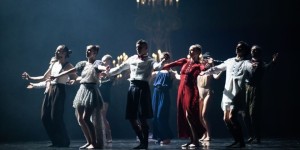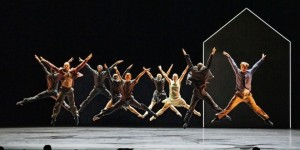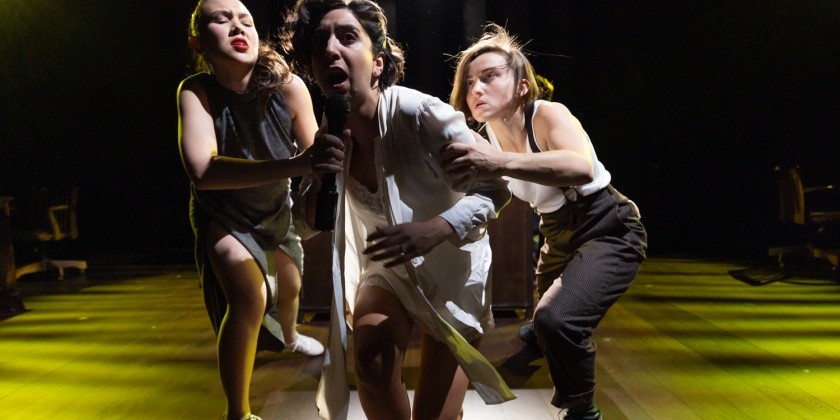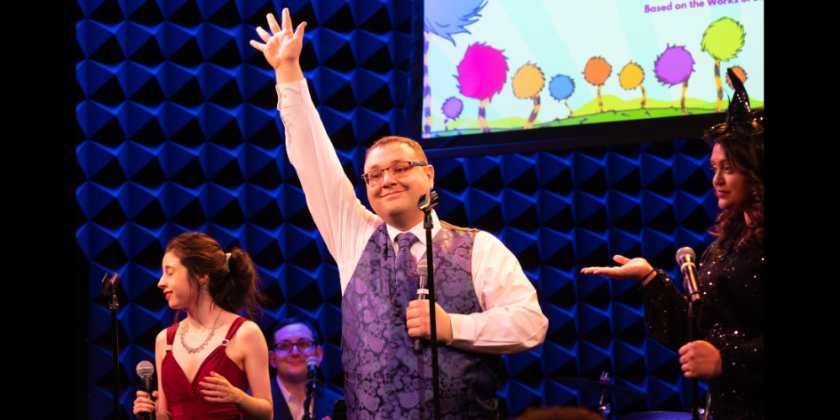THE DANCE ENTHUSIAST ASKS: Ballet Hispánico's Eduardo Vilaro on "Buscando a Juan" and Changing Narratives
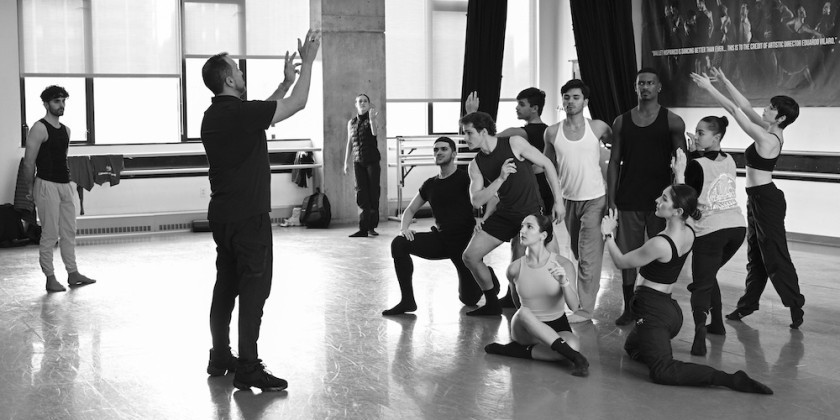
The Company Returns to New York City Center this April 25 - 28, 2024 and Celebrates Vilaro’s 15th Season as Artistic Director
Ballet Hispánico, the nation’s largest Latine/x/Hispanic dance organization, returns to City Center this April. Celebrating artistic director Eduardo Vilaro’s 15th season as artistic director, the program will feature the world premiere of Vilaro’s newest work Buscando a Juan, which explores the life of enslaved Afro-Hispanic painter Juan de Pareja.
With Vilaro at the helm, Ballet Hispánico has become an internationally acclaimed contemporary dance company, as well as an esteemed community steward, connecting and elevating Latin communities in New York City and beyond.
As the company navigates its role as a cultural leader in a world of ever-changing societal paradigms, The Dance Enthusiast’s Theo Boguszewski speaks with Vilaro about the complex, intersectional identities of immigrants, and how dance can facilitate greater understanding of other cultures.
Theo Boguszewski for The Dance Enthusiast: Hi! How’s it going?
Eduardo Vilaro: Oh, it's going a mile a minute. We’re getting ready for the season. We're still on tour. We leave on Thursday for the rest of the spring tour, and then we're, boom, right into the season.
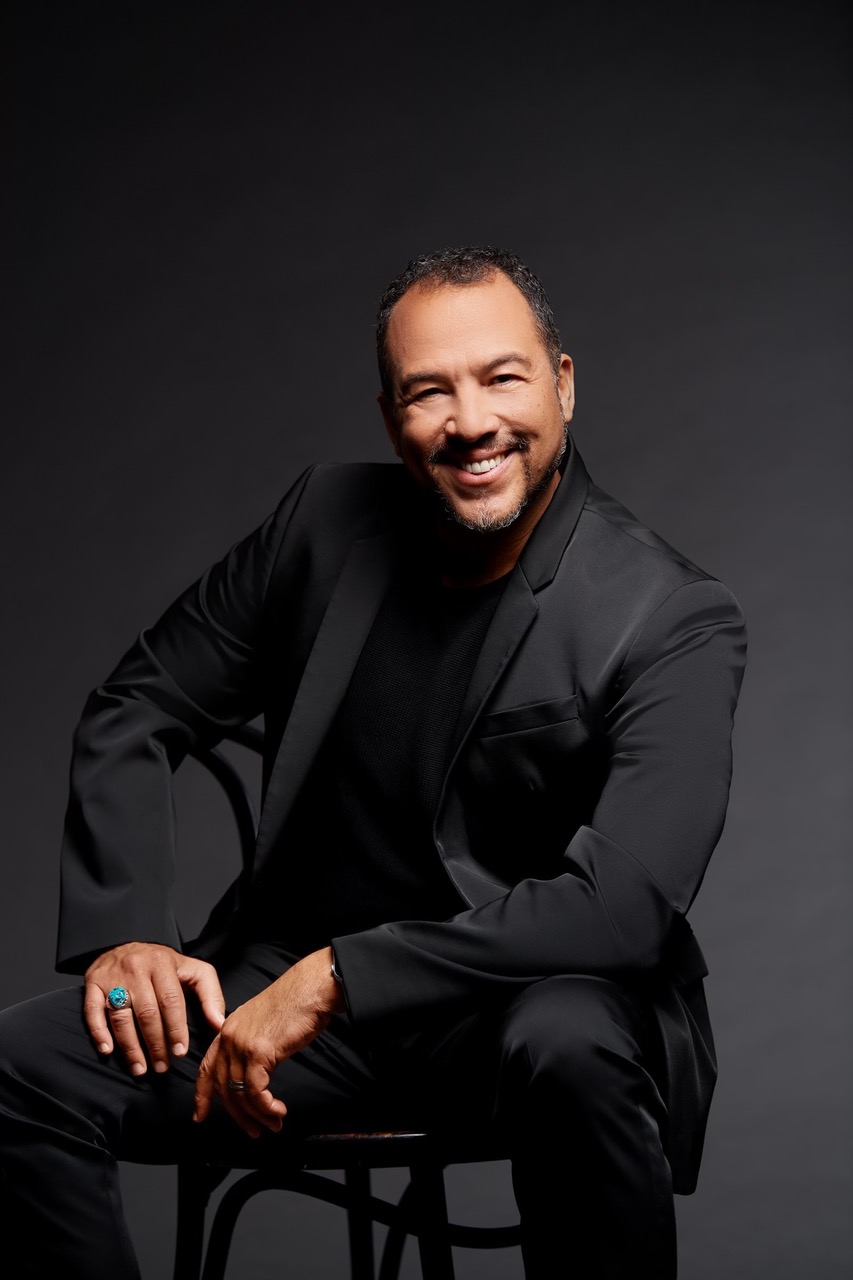
So exciting! Let's jump right into it. Can you share a little bit about your dance background and history?
I'm an immigrant. My family came to the United States from Cuba in 1968, we came directly to New York City and settled in the Bronx. I was a kid that had to learn English, the whole immigrant experience — trying to find my place in my adopted homeland. We're Cuban, so music and dance is part of our DNA. But it wasn't until 8th grade when I did a play, “You’re A Good Man, Charlie Brown,” I was given the role of Linus, and he had to dance with his blanket. I got bitten by the dance bug. And from that time, I did everything possible to find myself in dance. My dad was a macho Latino man, so it was really hard. I had to hide being a dancer for many years, until I got a scholarship at Adelphi University's program. And then I had to come out as an artist to my family. I went to Adelphi University on a full scholarship with their dance department. It was wonderful. And then three months before my graduation, I took company class with Ballet Hispánico, and Tina Ramirez offered me a job then and there.
Where did you study dance when you were in high school?
I was taking Capoeira class with Dance Brazil. In those studios there were also Broadway ballet classes, so I would take those. And then when they needed men for partnering, Graham gave me free classes. I'm a New York City rat. I was finding every hole where I could get my training. I didn’t have the pedigree, I didn’t go to ballet school with Mr. B.
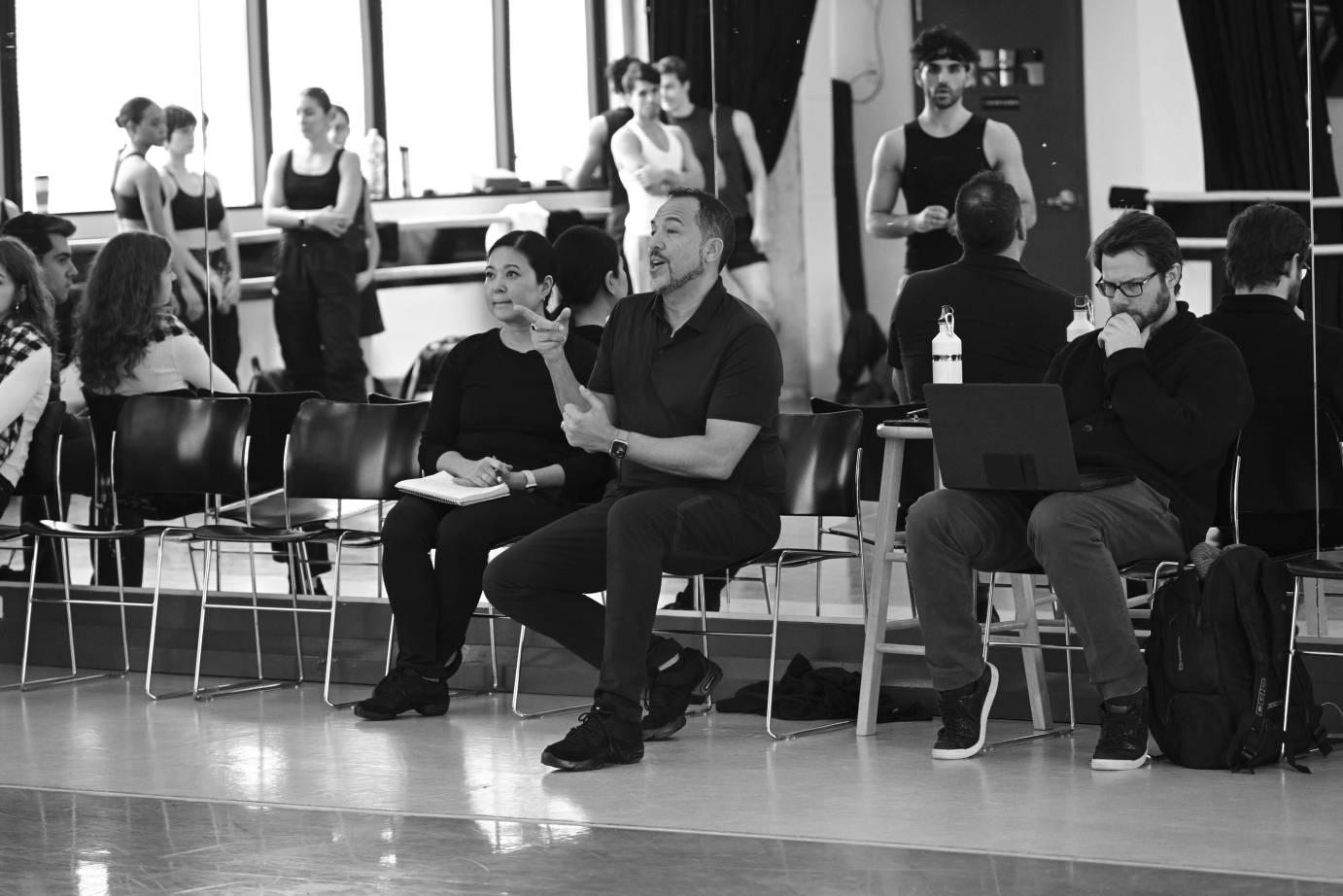
So how did your career lead you to the place where you're now leading Ballet Hispánico?
Tina was amazing with me. She really uplifted my talents. She immediately saw that I was a good educator, so I started teaching class. I became a voice for the organization as a dancer. I started building my administrative acumen. I led the negotiations for our contracts. It was through Tina that I learned how to be an entrepreneur and go out and ask for money for our kids programs. Throughout my decade with Ballet Hispánico, I grew not only as an artist, because I did a lot of wonderful dancing, but I also grew my leadership skills. And then I left, went to Chicago to do a master's program, and founded my own organization, Luna Negra Dance Theater, which was busting out at the seams, touring and performing in Chicago. But then Tina decided to step down from Hispánico, and they asked me if I'd be interested. And I know that the impact I could have in my vision of celebrating Latinidad, would be bigger here. So I came back. There’s a lot more in there, but…
Those are the cliff notes! It’s interesting, what it takes to be an artist isn't always what it takes to be a good business person. So it's rare to find somebody who has both. Right?
Well, I think we like to bifurcate things in the arts. But this new generation understands that it's okay to use both sides of your brain. For me, it’s really about vision. I have a vision that I have to nurture, and that means that I need all the tools possible in order to make it grow.
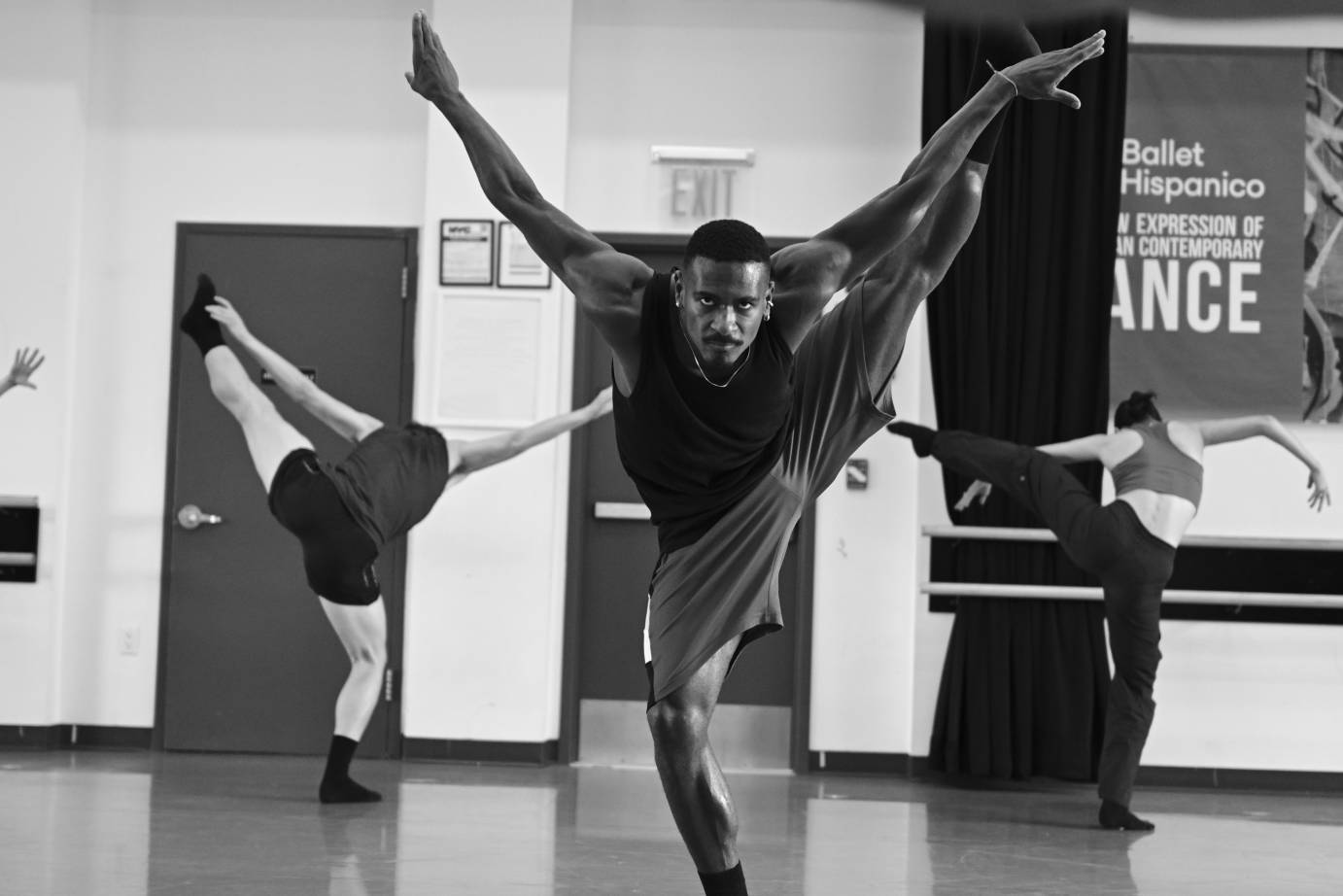
That totally makes sense. In the years that you've been running Hispánico, have there been major changes or transitions that came about through your leadership?
That's a great question. I always hate talking about myself… but I guess what I can say is that the organization has grown from a small company; while I was dancing here, it bugged me that people were like, “oh, yeah, it's Ballet Hispánico. Oh, they're kind of folklore. That’s cute.” And today we're one of the major dance companies. I was the cheerleader for understanding how important this organization is. Giving the company the visibility it needed was one of my accomplishments. The company has also grown in the way it thinks about diversity, the diversity within Latinidad. We're not a monolith. We're many. To me, the organization has really reached its original vision, which is high level, innovative art making, and at the same time embracing the culture and the community that it is from.
Are there particular types of Latinx voices you'd like to see more represented in the programming?
I'm big on intersectionalities. This year, we're celebrating gender roles in Latin America, which is already becoming difficult for some people. We're pushing the envelope. But, we can't be everything to everyone. We want to present work that is challenging but accessible. Innovative, but nurturing. I’d like to see us start elevating more female choreographers. And also uplifting the voices of Afro-Latino choreographers. There are very few Afro-Latinos that have been given the opportunity to create work or find themselves in contemporary dance.
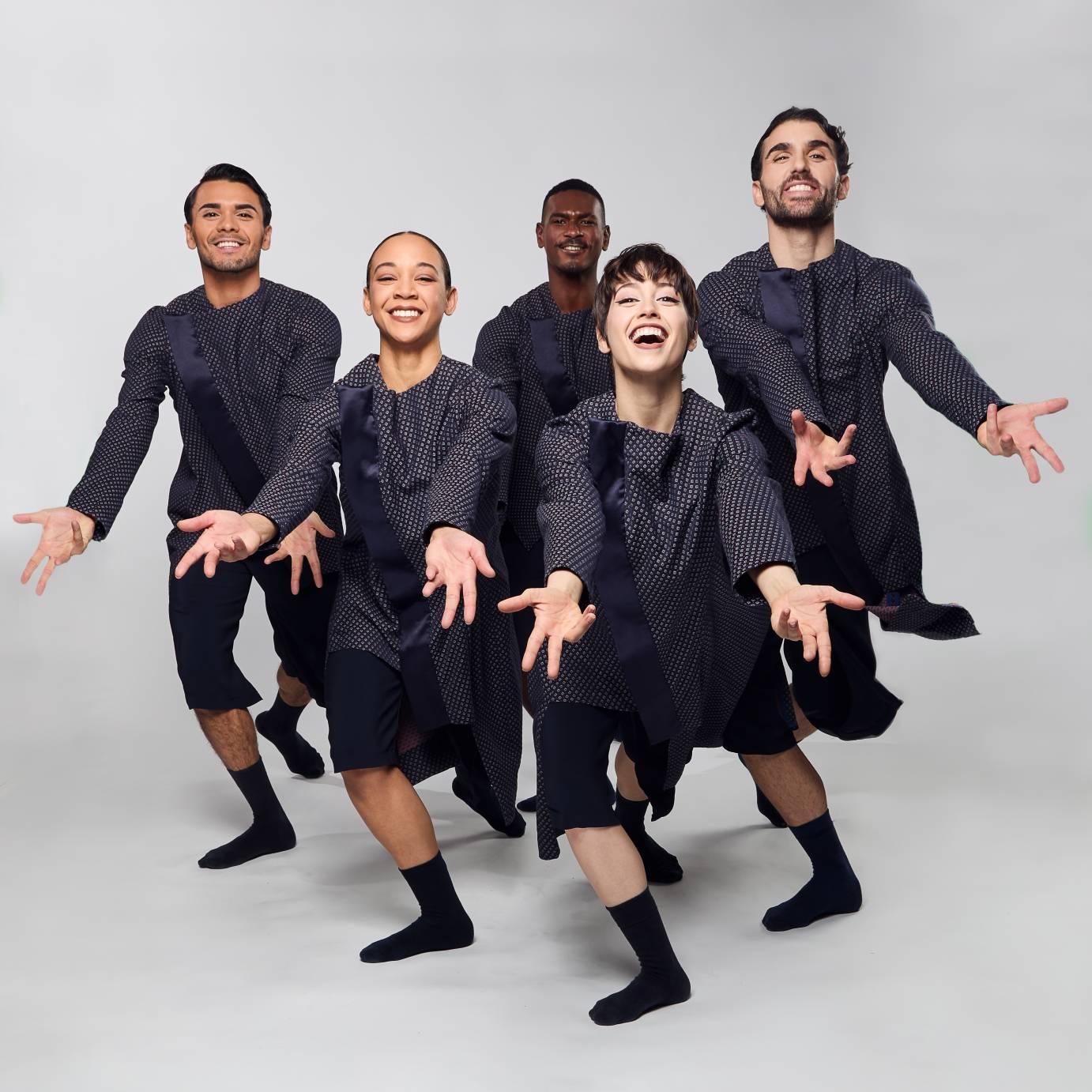
Omar Rivéra, Cori Lewis, Leonardo Brito, Amanda del Valle and Antonio Cangiano in "18+1." Photo: Bemjamin Rivera
It seems like accessibility is an important part of your mission. Like, the En Familia matinee. Tickets are $20, which is very reasonable. Can you share some other ways that Ballet Hispánico is working to make dance more accessible?
Every year we have an annual block party for Hispanic heritage, and there are performances on the streets. You can take a lesson. There's great taco food trucks. It is about giving back to the community. We have free programs here. We have Dialogos, which are panels where we bring people together to talk about race, dance, and culture. We have performances that are free in our studio; we've turned our largest studio into a black box. We're constantly accessible to our communities, not only the Latino community, the New York community.
Let's shift focus a little bit to your upcoming run at City Center. Is Ballet Hispánico at City Center every year?
Now we are. As of two years ago. I loved being at The Joyce; it doesn’t mean we won't be back at The Joyce. I just think that when a Latino immigrant family decides to spend money on an outing, they make a big production out of it, they want to feel like they're part of a larger community. And that's what a space like City Center gives you; a more general audience.
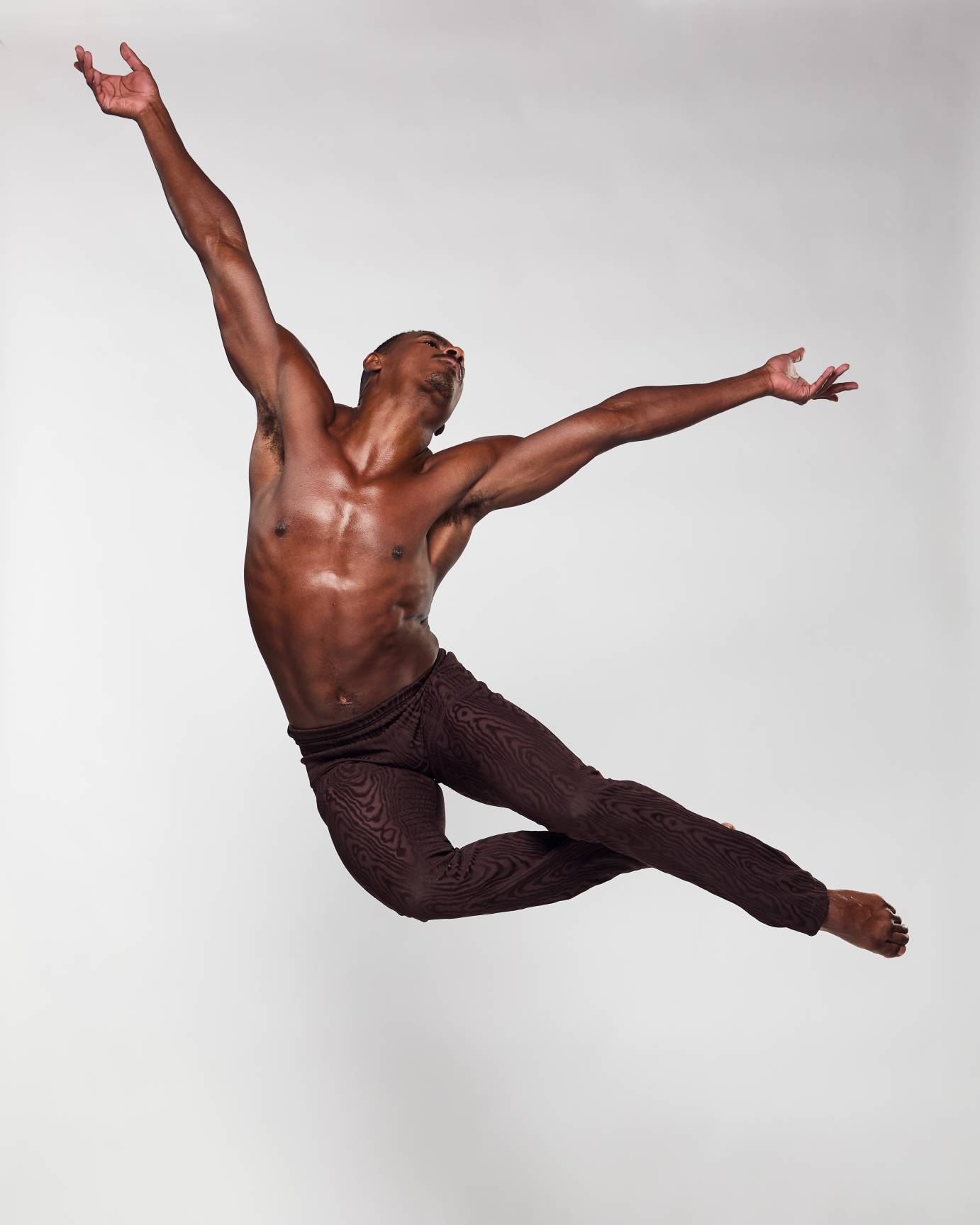
Leonardo Brito in "Buscando a Juan." Photo: Benjamin Rivera
You have a world premiere in this next season, right?
Yes, that's correct. Buscando a Juan. Buscando a Juan was a site specific work commissioned by MetLive Arts, in response to Juan de Pareja, an Afro hispanic painter. There's a famous portrait that Diego Velasquez, his master, did of him. Juan was a slave, but grew into an artist because he became a painter and a portrait specialist in Spain. I said yes to this immediately because it spoke to me of who I am as also an Afro-Hispanic descendant. And this idea of lifting the curtain to speak about this artist who isn’t spoken about.
So I created a site specific work there, right near the exhibit. I did a lot of research with the curators. There's not much on his life, so this is not a narrative. But that really excites me because that's what we go through as immigrants, as people who were removed, who were extracted. We don't have clear lineage or legacy. So I was very attracted to that. It was very well received. And then, because this is my 15th year, I decided to put it on a proscenium. It captures the essences of who he was, the relationship of him and Diego Velasquez and his relationship to religion and faith. And both of those things were also his oppressors. It's very interesting to me, the love that he had for painting and also his master and his religion, because he painted a lot of religious portraits. So the piece is a meditation on this man who is full of intersections.
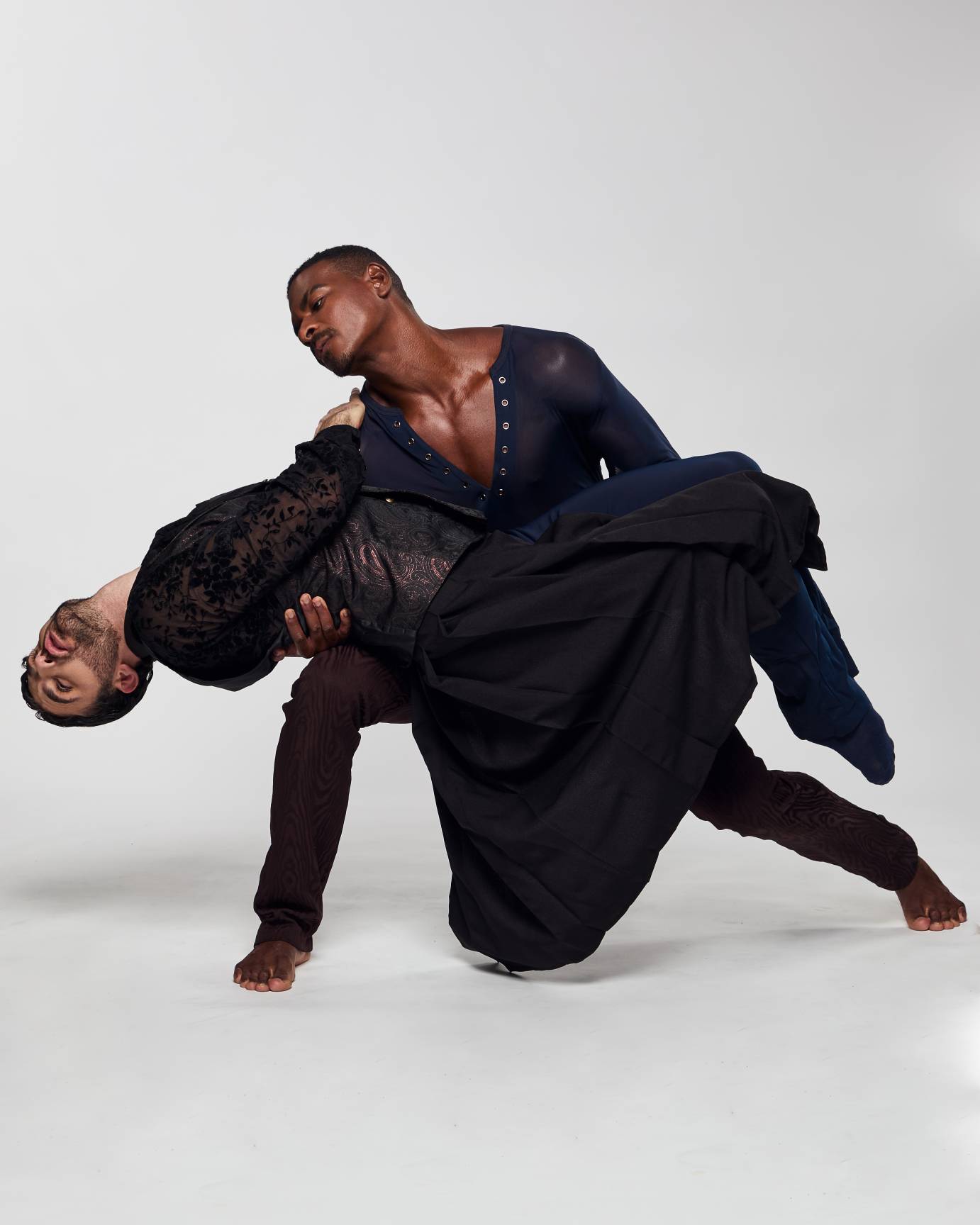
Antonio Cangiano and Leonardo Brito in "Buscando a Juan." Photo: Benjamin Rivera
I feel like that's a theme; we see a lot of Latinx countries that are Catholic, that speak Spanish, that have adopted, even in spite of being independent, these cultural ideas from their oppressors. And there’s also this theme about how Black and Latinx artists have often propped up white European artists. It’s so interesting that you're focusing on that and bringing that to light. Could you tell me a little bit about House of Mad’moiselle? It’s a restaging of an older piece — do you think it’s still relevant today?
Well, it's more relevant now because of the changes that Annabelle has decided to make. We show a lot of her works because I fell in love with who she is. We have strong discussions about Latinidad. She made this piece mainly to celebrate women and this idea that a lot of our females are called “Maria.” And that's again, going back to Catholicism, which we were given through colonialism. I asked her to do it again because it was such an interesting piece and the first one that really moved the company into a very contemporary look, and she said, I'm changing the lead person, and I want it to be a drag personality. So gender is now part of the discussion about femininity, about Latino machismo, about oppressive states. And she does it in a very subtle way. But this work now has moved from just the idea about the strength of women to these larger questions of what is gender? How do we accept gender? It’s a very strong statement, to give a place to a drag queen on a contemporary dance space.
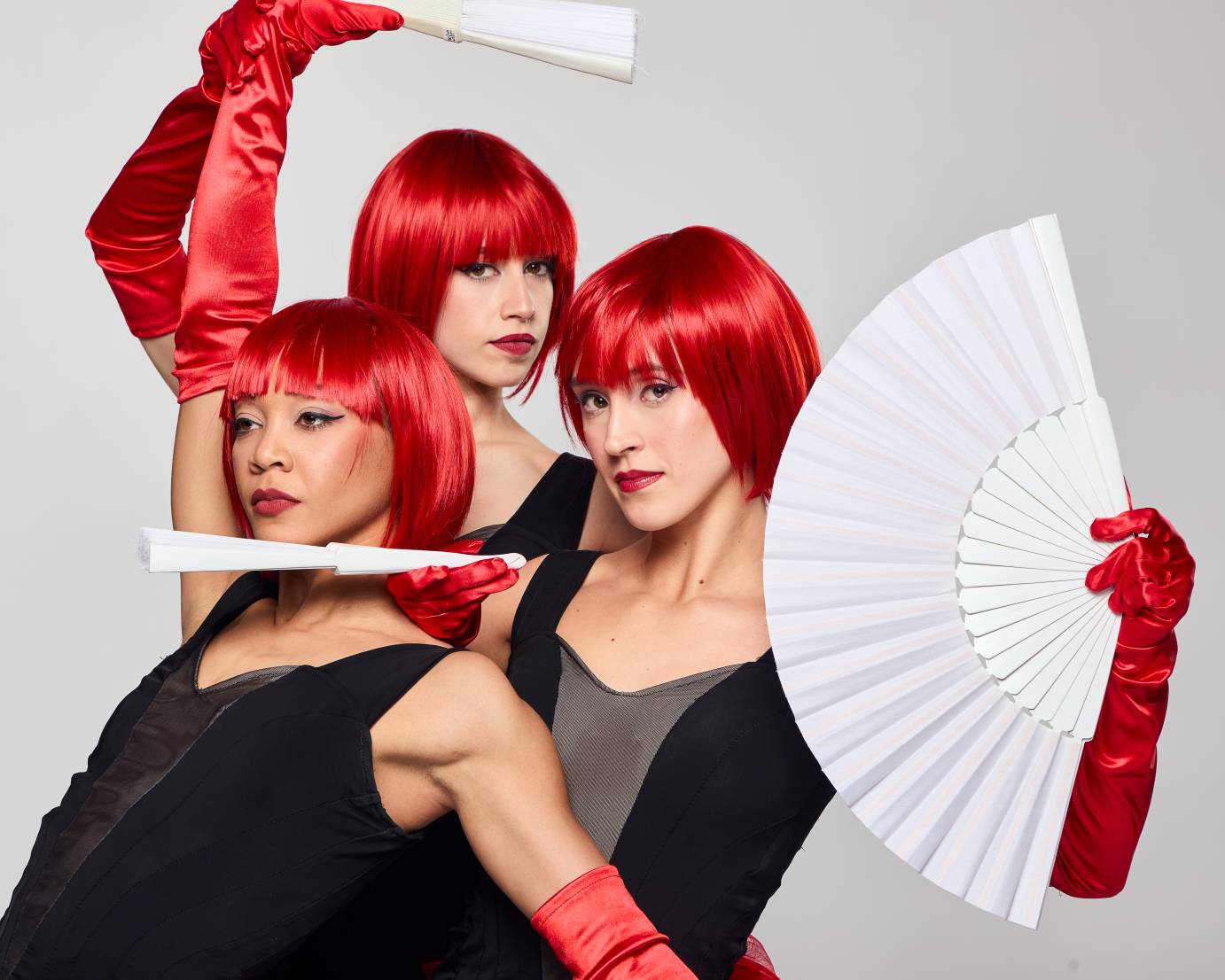
Isabel Robles, Amanda del Valle and Cori Lewis in "House of Mad'moiselle." Photo: Benjamin Rivera
Are there portions of your audience that might have a difficult time with that?
I just got an email today from someone who saw us in Myrtle beach. We didn't do the piece, but they were so taken by our performance that they did some research and saw that we’re doing this and lectured me on how young children should not be exposed to drag queens.
Wow. So this is a very interesting moment for you and for the company.
This is an interesting moment. And, I mean, I'm not backing down teaching children anything. I'm exposing the realities of the world. And parents need to understand that everyone else is not responsible for the way their child consumes culture and art. They are. They have to sit them down. I do it. I'm a parent. We artists, we reflect. We are mirrors to the human condition.
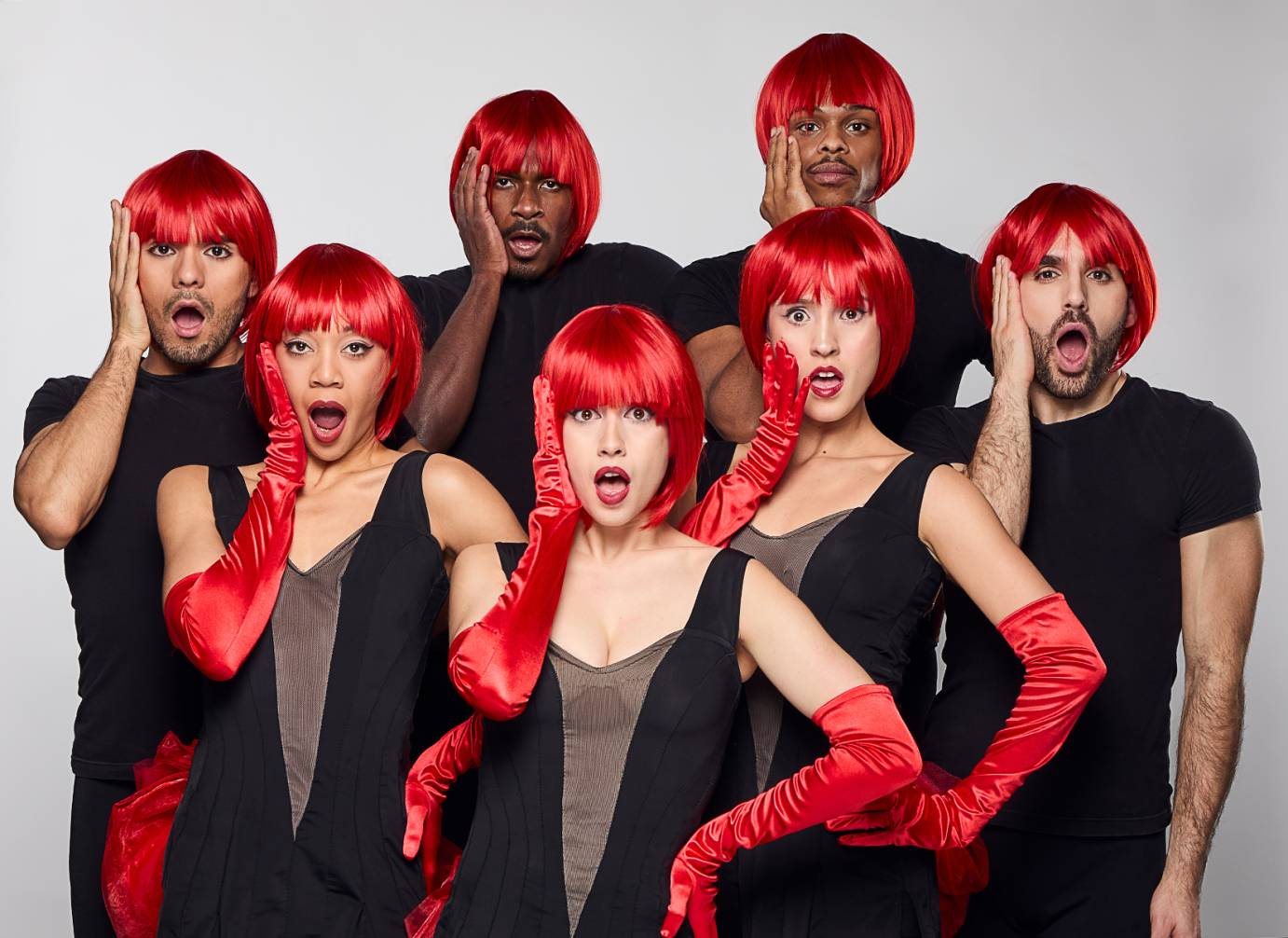
Omar Rivéra, Cori Lewis, Leonardo Brito, Amanda del Valle, Isabel Robles, Amir J. Baldwin and Antonio Cangiano in "House of Mad'moiselle." Photo: Benjamin Rivera
Not to talk about politics, but I think politics play a role in our collective perception of other cultures, especially with recent conversations about immigration and the migrant crisis. Do you feel like Ballet Hispánico can be a voice in that conversation?
Absolutely. I don't think it's explicitly our mission, but it’s part of who we are, of who any arts organization is. The arts are the language that we should go to when our own language doesn't work.
What's on the horizon for Ballet Hispánico in the next five years?
For the first time in the history of Ballet Hispánico, we started doing full length works. We did Doña Perón, and we're going to continue to do full length works. Yeah, we're going to change narratives through full length work. So in the future, there are more heroines to talk about beyond Eva Perón, there are more heroes beyond Juan de Pareja, and there are stories beyond the Nutcracker. How do Latinos celebrate Christmas? There's a lot to still be done and I'm so ready. I'm here for it.




